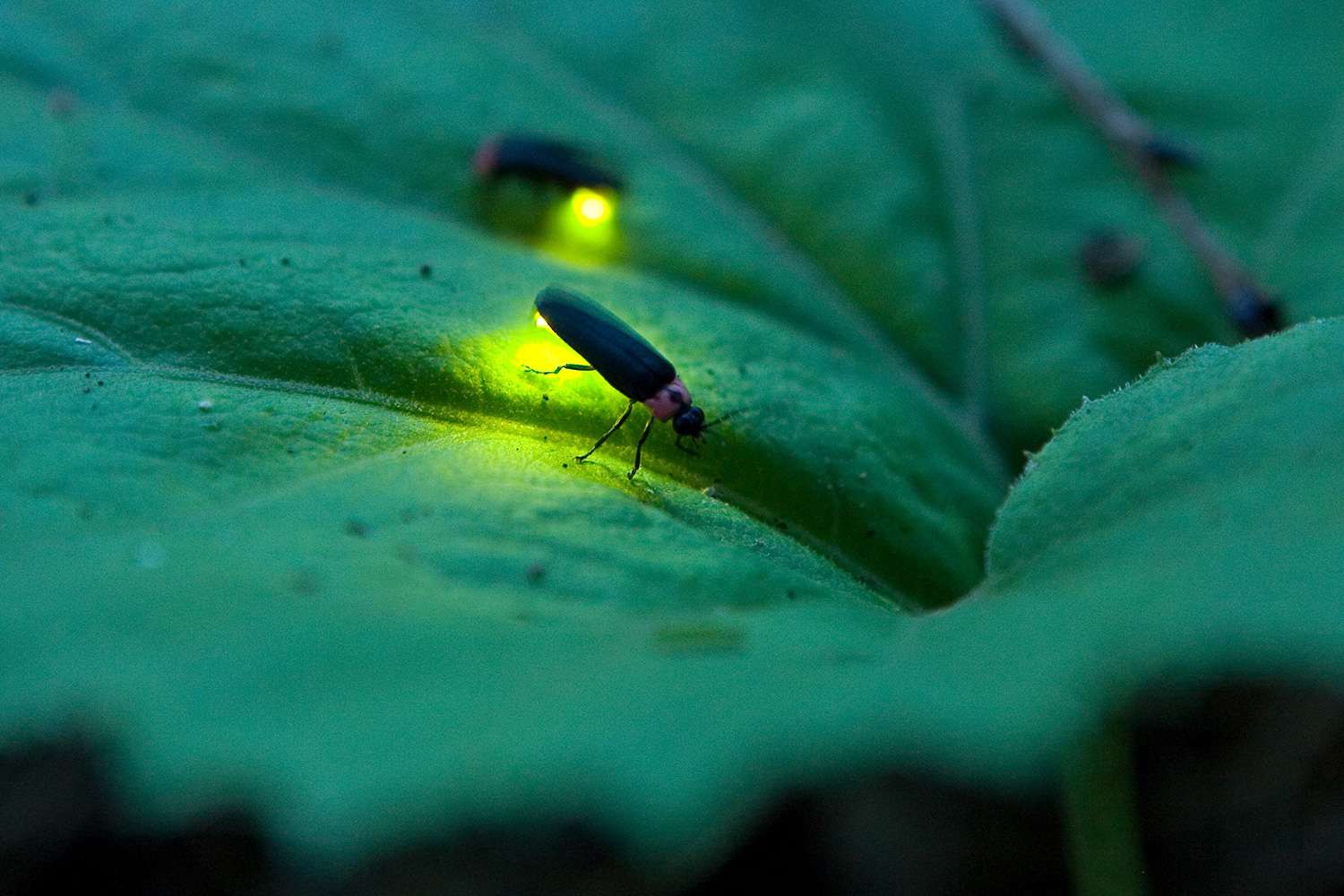
Fireflies, also known as lightning bugs, are fascinating creatures that have captured the awe and curiosity of humans for centuries. These enchanting insects are known for their unique ability to produce light through a process called bioluminescence. Found in various regions of the world, fireflies are most commonly spotted in warm and humid environments, such as forests, meadows, and gardens.
In this article, we will delve into the intriguing world of fireflies and uncover 18 fascinating facts about these remarkable insects. From their mesmerizing light displays to their important role in the ecosystem, fireflies have a lot more to offer than meets the eye. So, let’s embark on this illuminating journey and discover the secrets of fireflies.
Key Takeaways:
- Fireflies are fascinating insects that communicate through flashing lights, with each species having its unique pattern. They are also celebrated in cultural festivals but face threats like habitat loss and climate change.
- Fireflies play a vital role in the ecosystem as bioindicators, reflecting the environmental health of an area. Their bioluminescence has potential for medical research, and they are found in diverse habitats worldwide.
Firefly Lifecycle
Fireflies undergo a fascinating transformation, starting as eggs that hatch into larvae known as glow worms. These glow worms eventually become adult fireflies.
Bioluminescent Light
Fireflies produce light through a process called bioluminescence. The light comes from a chemical reaction within their bodies involving luciferin and the enzyme luciferase.
Communication through Flashing
Fireflies use light signals to communicate with each other. Each species has its unique pattern of flashing, which allows them to identify potential mates.
Firefly Synchronization
In some areas, fireflies exhibit a phenomenon called “synchronous flashing,” where hundreds of fireflies flash in unison, creating a magical display of synchronized light.
Firefly Diversity
There are over 2,000 known species of fireflies worldwide. Each species has distinct characteristics, including differences in their flashing patterns and preferred habitats.
Firefly Symbolism
Fireflies are often associated with various cultural symbolism, including love, romance, hope, and spirituality. Their glowing presence has inspired poets, artists, and storytellers for centuries.
Firefly Lifespan
The lifespan of a firefly varies depending on the species. While some may live only a few weeks as adults, others can live up to a couple of months.
Firefly Habitat
Fireflies can be found in a diverse range of habitats, including forests, grasslands, wetlands, and even urban areas. They are particularly abundant in warm and humid regions.
Firefly Courtship Rituals
Male fireflies use their flashing patterns to attract female fireflies for mating. They often fly in specific patterns and synchronize their flashes to signal their availability.
Firefly Predators
Fireflies face various predators, including spiders, birds, bats, and even other fireflies. Some predators have the ability to mimic the flashing patterns of fireflies to attract and consume them.
Firefly Glow as a Warning Signal
Some firefly species emit a bitter-tasting chemical along with their glow, serving as a warning to predators that they are unpalatable.
Firefly Medicinal Potential
Firefly bioluminescence has shown potential in medical research. Scientists are studying ways to utilize their glow for applications such as cancer detection and monitoring cellular activity.
Firefly Geographical Distribution
Fireflies can be found on every continent except Antarctica. However, they are most diverse and abundant in tropical and temperate regions.
Firefly Feeding Habits
Fireflies primarily feed on nectar and pollen as adults. However, during their larval stage, they are carnivorous and consume small insects, snails, and earthworms.
Firefly Glow Control
Fireflies have the ability to control the intensity and duration of their glowing light, allowing them to conserve energy when necessary.
Firefly Cultural Celebrations
In certain countries, fireflies are celebrated through festivals and events, where people gather to witness their dazzling displays in the summer months.
Firefly Decline and Conservation
Fireflies are facing numerous threats, including habitat loss, light pollution, pesticide use, and climate change. Conservation efforts are crucial to ensure their survival.
Fireflies as Bioindicators
Fireflies are considered bioindicators of environmental health. Their abundance and diversity can indicate the ecological balance of an ecosystem.
Fireflies truly captivate our imagination with their mystical glow and fascinating behavior. Learning about these incredible insects deepens our appreciation for the wonders of the natural world. So, the next time you see a firefly lighting up the night, take a moment to marvel at their illuminating beauty.
Conclusion
In conclusion, fireflies are fascinating creatures that captivate our attention with their enchanting light displays. These small beetles have a unique ability to produce light through a process called bioluminescence. Fireflies use their light signals to communicate with one another, find mates, and even ward off predators. They are found in various habitats around the world and have a crucial role in maintaining ecosystem balance.Despite their magical appearance, fireflies are facing several challenges such as habitat loss and light pollution. As an important part of our environment, it is crucial that we take steps to protect these beautiful insects. By minimizing the use of artificial lights at night and preserving their natural habitats, we can ensure the survival of firefly populations for future generations to enjoy.So next time you spot a firefly on a warm summer’s night, take a moment to appreciate the natural wonder that these incredible creatures bring. Their mesmerizing lights serve as a reminder of the beauty and diversity of the animal kingdom.
FAQs
1. How do fireflies produce light?
Fireflies produce light through a chemical reaction called bioluminescence. They have a specialized organ in their abdomen that produces light when oxygen and a substance called luciferin react.
2. Why do fireflies light up?
Fireflies light up to communicate with each other, particularly during the mating season. Males will flash a specific pattern to attract females, who will then respond with their own light signal.
3. Where can fireflies be found?
Fireflies can be found in various habitats around the world, including forests, grasslands, wetlands, and even gardens. Different species of fireflies have different preferences for their habitats.
4. Do all fireflies produce light?
No, not all fireflies produce light. Some species of fireflies are known as “dark fireflies” and do not have the ability to produce light. They rely on other means of communication to find mates.
5. How long do fireflies live?
The lifespan of a firefly can vary depending on the species. In general, adult fireflies only live for a few weeks to a couple of months.
Fireflies captivate imaginations with their enchanting glow, but there's more to explore beyond their mesmerizing light. Music lovers can't miss the scintillating beats and unforgettable performances at Firefly Music Festival. For a deeper dive into firefly facts, check out our astonishing collection of tidbits about these luminous insects. Film enthusiasts will be moved by the poignant story and powerful symbolism in the animated masterpiece Grave of the Fireflies. Each topic offers a unique perspective on the world of fireflies, promising to enlighten, entertain, and inspire.
Was this page helpful?
Our commitment to delivering trustworthy and engaging content is at the heart of what we do. Each fact on our site is contributed by real users like you, bringing a wealth of diverse insights and information. To ensure the highest standards of accuracy and reliability, our dedicated editors meticulously review each submission. This process guarantees that the facts we share are not only fascinating but also credible. Trust in our commitment to quality and authenticity as you explore and learn with us.


